|
Judy Malloy: "Each time the song is sung, our notions of it change, and we are changed by it. The words are old. They have been worn into shape by many ears and mouths and have been contemplated often. But every time is new because the time is new, and there is no time like now." - Ciaran Carson [1]
Intertwining Irish history and generations of Irish American family memories in a work of polyphonic literature based on the rhythms of ancient Irish Poetry, the imagined lost Irish Sonata, the madrigal, streams and fountains, and Irish song, From Ireland with Letters is an epic electronic manuscript told in the public space of the Internet. It could also be considered playable text or generative hyperfiction.
The role of displacement and disrupted tradition in the work of contemporary Irish authors [2] is paralleled in this epic Irish American electronic manuscript, which interweaves the stories of Walter Power -- who came to America as an Irish slave on The Goodfellow in 1654, stolen from his family by Cromwell's soldiers and sold in the Massachusetts Bay Colony when he was 14 years old -- and his descendant, 19th century Irish American sculptor Hiram Powers, who grew up on a Vermont farm and moved to Florence, Italy, where his work played a symbolic role in the fight against African American slavery in America.
From Ireland with Letters is comprised of Eight Cantos, one of which is a Prologue (canto 1) and one of which is a coda. (canto 8) Each canto of From Ireland with Letters is separate and written in a distinctive structure and tempo, but the whole is integrated by themes introduced in the opening Prologue. As a general rule, the work can be read either by waiting for the text to change on its own (as if watching a film or listening to a piece of music) or by clicking on any lexia, in which case the reader takes control of how the story is explored. The authoring system varies from unmeasured notation in cantos I-III, to measured notation (malloy: fiddlers_passage) in cantos IV-VI, to generative hypertext in the concluding cantos.
With the exception of The Not Yet Named Jig, each part of this work of polyphonic/polychoral literature is created with three or four moving columns of poetic text that -- like a piece of music -- work together in counterpoint. And just as a listener needs to listen to a complex work of music more than once to understand how it works, each part of From Ireland with Letters benefits from several "replays". The authoring system for much of From Ireland with Letters uses the text-based musical composition structure that I began in 1991 with the three-column Wasting Time (After the Book, Perforations 3, Summer, 1992) and resumed in Berkeley in 2009, influenced by early music at the University of California at Berkeley and in particular by Davitt Moroney's writing and performance, by visiting professor Pedro Memelsdorff's lectures on theory composers in late medieval Italy, and by books including Willi Apel, The Notation of Polyphonic Music 900-1600, 4th edition, Cambridge, MA: The Medieval Academy of America, 1949 and Carl Parrish, Notation of Medieval Music, NY: Norton, 1957. The final two cantos, the post-colonial The Not Yet Named Jig and the Irish American song, when we return again, are written in JavaScript variations of the generative hypertext authoring system, which I created in 1988 for the third file of Uncle Roger and for its name was Penelope. The Eight Cantos of From Ireland with Letters It has been a long journey from March 17, 2010, when From Ireland with Letters began with family pub talk in Berkeley. In that year -- "unfolding in a series of central lexias, while alongside the lexias, an interface of phrases moves in a narrative dance, allowing access to the story at many points..." -- a Prologue set the stage for the work as a whole. canto 1: Prologue Writing about the structure of Irish Dance music, in Traditional Music in Ireland, (Cork, Ireland: Ossian Publications, 1978, p. 27) Irish musician Tomás O'Canainn observes that there is a tendency to concentrate on a few notes of the available scale "and return to these again and again throughout the tune". But when played by an expert player, the result is "a tune which attains a unity of purpose and a build-up of tension eminently satisfying.."
Additionally, the central lexias of the Prologue can be advanced by clicking on the words themselves or by waiting for the lexias to change -- i.e. the narrative will continue even if the reader choses to observe it rather than play it. The interface to the Prologue is a variation of the narrabase interface I created and programmed for The Yellow Bowl in 1992, which allowed the reader to move between two separate but related stories.(A disk version of The Yellow Bowl was exhibited at Digital Identities, Sheppard Gallery, University of Nevada, Reno, February 3-March 3, 1995 and at FISEA, Minneapolis, MN, November, 1993) The interface also incorporates the "lines" interfaces used in l0ve0ne in 1994 and somewhat differently in Dorothy Abrona McCrae in 2000. In the creation of interface. I work somewhat like a painter, who maintains his or her original vision in a series of works, while at the same time somewhat varying each work as the series progresses. And within each larger narrative, there may be variations of structure. __________________ Primary sources for the Prologue are:
Tomás O'Canainn, Traditional Music in Ireland, Cork, Ireland: Ossian Publications, 1978 In Annals of the Irish Harpers, there is a story that illustrates the importance of such magical bardic detail. It concerns how in the Sliabb Echtge mountain range a 10th century harper saved his own life by calling the ghost of his former master, the poet Flann MacLonan, who in a tour de force performance "...recited a poem of one hundred and thirty-two lines, commencing: 'Delightful, delightful lofty Echtge' and followed by the history of the mountains, the warriors and tribes, who had made it their hunting ground including the famous Finn MacCumhaill and his band. Giving the names of peaks, lakes, rivers, fords, woods, he concluded with a eulogy of the Dalcassians of Clare." ______________________ (Charlotte Milligan Fox, Annals of the Irish Harpers, NY: Dutton, 1912. pp. 85-86. Her source is Eugene O'Curry's Manners and Customs of the Ancient Irish.) canto 2: Begin with the Arrival
"The sound of the fiddle Begin with the Arrival takes place in a pub in New Hampshire where Máire is performing the lay of Walter Power. Art Historian, Liam O'Brien, whom she has never met, is in the audience.
Created in a polyphonic text structure and based partly on the cadence of ancient Irish poetry, and on Denis Murphy's Cromwell in Ireland, a History of Cromwell's Irish Campaign, Begin with the Arrival can be experienced either by simply waiting for the text to change, or by clicking on any one of the four lexia spaces, or by a combination of these ways of reading. __________________ Primary sources for Begin with the Arrival are:
Séan Crosson, "The Given Note": Traditional Music and Modern Irish Poetry, Cambridge, UK:
Cambridge Scholars Publishing, 2008 canto 3: Passage
A passage is also a journey: the dichotomy between "The Middle Passage"; (the voyage of the African American captives, who were taken from their homeland and brought across the Atlantic to toil as slaves) Walter Power's journey on a slave ship to America; the difficult passage on packet ships that brought Great Famine immigrants to America; Hiram's voyage to Italy; and the scholar's magic realism passage through Florence in which Liam is immersed in this canto. Other themes move back and forth in the lexia spaces in Passage: details in the works of Hudson Valley painters from Liam's former research; his former girl friend wearing high heels; women whose sculpted or painted images Liam/Hiram sees in virtual travels in Florence; (Leda, Pomona, Flora, Venus) his father playing recordings of Irish music in his carpenter's studio; the passage where the sculptor Hiram Powers describes his design of a fountain for Capitol Park; fountains in Florence; streams flowing down the mountain in New Hampshire where Liam O'Brien has been hiking; and the memory of Máire Powers playing the Irish fiddle. Created in a polyphonic text structure, passage can be experienced either by simply waiting for the text to change, or by clicking on any one of the three lexia spaces, or by a combination of these ways of reading. The work ends when you reach the screen with the words "And all along the banks of the Arno, there were lanterns", but clicking on this phrase will begin it again. To completely experience the text, you might want to read it several times. __________________ Primary sources for Passage are:
Archives Of American Art, Smithsonian Institution, Hiram Powers Papers canto 4: Fiddler's Passage
while in the splashing notes
Created in a polyphonic text structure, fiddlers passage can be experienced either by simply waiting for the text to change, or by clicking on any one of the three lexia spaces, or by a combination of these ways of reading. When the work has played through once, it can be replayed by clicking on "replay fiddlers passage" in the lower right hand corner. Since the text in fiddler's passage moves fast, replaying it allows concentration on different "tracks" of the work. Primary sources for Fiddler's Passage are:
"Easy and Slow" Steve Earle, "Galway Girl", recorded with Irish musician Sharon Shannon, on Steve Earle, Transcendental Blues, 2000. James Joyce, "The Sirens", Ulysses, part 11
Hugh Shields, Narrative Singing in Ireland, Dublin: Irish Academic Press, 1993 canto 5: Junction of Several Trails
"In times of peace,
"The early literature of Ireland is so bound up with the early history, and the history so bound up and associated with tribal names, memorial sites, patronymics, and topographical nomenclature, that it presents a kind of heterogeneous whole, that which is recognised history running into and resting upon suspected or often even evident myth, while tribal patronymics and national genealogies abut upon both, and the whole is propped and supported by legions of place- names still there to testify, as it were, to the truth of all" Douglas Hyde, A Literary History of Ireland From Earliest Times to the Present Day, 1899 Junction of Several Trails begins with a sinfonia in which the reader follows Máire Powers and Liam O'Brien on their separate paths to their meeting at the Farmhouse Cafe. It then segues into a cantata conversation. The characters are set in an electronic tapestry, where left and right side continuo/ marginalia are core to the way that, with slowly moving polyphonic text, the narrative is revealed. Songs and Poetry Quoted in Junction of Several Trails The quotation from the Trad ballad "The Gypsy Rover", that appears in Junction of Several Trails, is "The Whistling Gypsy" performed by Leo Maguire in 1950 and also performed by Tommy Makem, among others.
"And when I'm drinking,
"upon his knee a pretty wench
"sometimes
"...she sat down beside him,
"As down the glen one Easter morn
"MacDonagh and MacBride
Rising of the Moon canto 6: Gone with Our Wanderers
"Giovanni Duprè," he said out loud. Electronic Literature has come of age in many ways. For me it is a continued focus on the distinction of screen-based story set in motion; the hunting, gathering and remixing of ancient and contemporary narrative; the thrill of inventing a way to score words like music; honing the craft of telling a story in the public square of the Internet; and the interactivity of allowing the reader the choice to click rather than wait for the word music to progress. In Gone with Our Wanderers, a scholar confronts the known and the unknown in both his life and his work, as with dense, rhythmic polyphonic text, the narrative shifts from the
Along the way, in a polyphonic remix, Gone with Our Wanderers replays the words of 19th century Florentine sculptor Giovanni Duprè; replays Giuseppe Verdi's words from his autobiography that concern his antislavery opera Nabucco; replays the Narrative of the Adventures and Escape of Moses Roper from American Slavery, which was published in London in 1837 and went through at least 11 editions. It is 1842. Hiram Powers is in his studio in Florence, creating a model for The Greek Slave. It is the year that Nabucco premiered at La Scala in Milan. The Irish woman poet Frances Browne has just published "Songs of Our Land" in the Irish Penny Journal. Her words echo in a 21st century art historian's informal translation of the chorus of Hebrew slaves from Nabucco: "Va Pensiero". It is 1844, Hiram Powers and the Italian sculptors who work with him are sitting beside the partially carved marble sculpture of The Greek Slave. It is the year that Nabucco was first performed in Florence. Either by watching the words play like a piece of music or by clicking on the words to advance the narrative Gone with Our Wanderers is best read on a laptop screen with "view full screen" selected. The work should run on any platform and browser, but Explorer or Firefox are recommended. It can be read either by watching the words play like a piece of music or by clicking on the words to advance the narrative in a way that the reader choses. In the latter case, there will be times when the music is silent. Wait, and it will return. Once in a while, the the tracks do not all display; reloading the work usually fixes the problem. [The listing of the cantos is in progress...]
Saint Patrick, Confessio Resonant of the ancient Irish lay and the tradition of the ceilidh, From Ireland with Letters is a work of polyphonic electronic literature, told in the public space of the Internet. The title of this work is taken from Saint Patrick's Confessio, where the words are "from Ireland with innumerable letters". Having escaped from slavery in Ireland, Saint Patrick, had a vision of a man from Ireland asking him -- with many letters -- to return to Erin. In his "Letter To Coroticus", Patrick was also one of the first people whose words against slavery are recorded. Notes
1. Ciaran Carson (Last Night's Fun, NY: North Point Press, 1996. p, 116)
From Ireland with Letters is copyright 2010-2015 Judy Malloy |
|

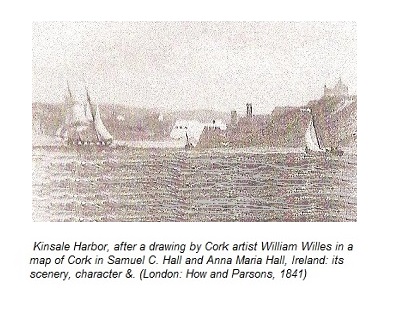
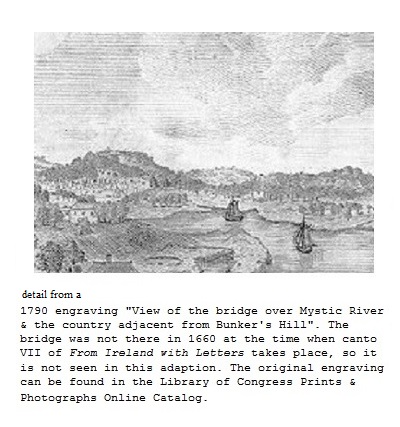 The narrative is a storyteller's retelling of what is known of a true family story. However, the characters who tell it in From Ireland with Letters are fictional. Walter Power's story is initially told by his descendant Máire Powers, an Irish American fiddler who is writing a lay about 17th century Ireland and Irish slavery in America; Hiram Powers' story is initially told by 19th century art historian Liam O'Brien, who is researching the sculptor's life and work. As the narrative progresses, both their own lives and their research begin to merge
The narrative is a storyteller's retelling of what is known of a true family story. However, the characters who tell it in From Ireland with Letters are fictional. Walter Power's story is initially told by his descendant Máire Powers, an Irish American fiddler who is writing a lay about 17th century Ireland and Irish slavery in America; Hiram Powers' story is initially told by 19th century art historian Liam O'Brien, who is researching the sculptor's life and work. As the narrative progresses, both their own lives and their research begin to merge
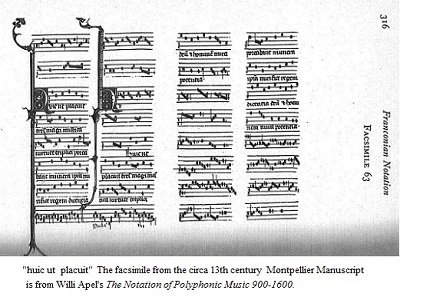 Serving as an introduction to the themes of the work as a whole, the Prologue is indexed as if it was a dance, where the "music" of the "lines" on the right side of the screen keys the separate yet merging narratives of Máire Powers and Liam O'Brien on the left side of the screen. If the reader plays the text by click-moving between the two columns, a picture of the different ways that Liam, the researcher, and Máire, the musician, approach their subjects emerges. (But note that some of the links are melismatic, i.e. one "line" leads to a series of lexias, all of which are represented by this one line)
Serving as an introduction to the themes of the work as a whole, the Prologue is indexed as if it was a dance, where the "music" of the "lines" on the right side of the screen keys the separate yet merging narratives of Máire Powers and Liam O'Brien on the left side of the screen. If the reader plays the text by click-moving between the two columns, a picture of the different ways that Liam, the researcher, and Máire, the musician, approach their subjects emerges. (But note that some of the links are melismatic, i.e. one "line" leads to a series of lexias, all of which are represented by this one line)
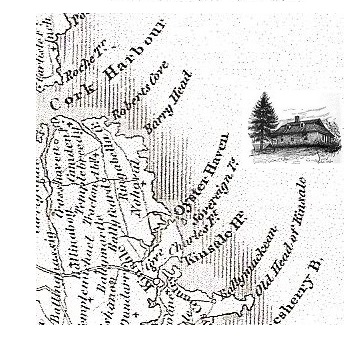 In the lay/lament telling of the terrible story of Cromwell's destruction of Ireland and the ensuing Transplantation and slavery, Irish American fiddler Máire Powers heightens the aisling tradition of Irish poetry by evoking the Irish Harpers at the 1792 Belfast Harp Festival, where a woman harper, Rose Mooney, was one of ten harpers, who represented the best of Irish musicians. Irish patriots James Napper Tandy, John Keogh, and Wolfe Tone were in the audience.
In the lay/lament telling of the terrible story of Cromwell's destruction of Ireland and the ensuing Transplantation and slavery, Irish American fiddler Máire Powers heightens the aisling tradition of Irish poetry by evoking the Irish Harpers at the 1792 Belfast Harp Festival, where a woman harper, Rose Mooney, was one of ten harpers, who represented the best of Irish musicians. Irish patriots James Napper Tandy, John Keogh, and Wolfe Tone were in the audience.
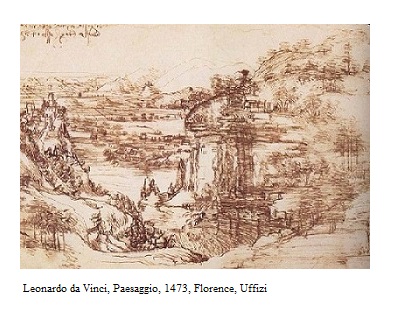 In the art or music sense, a "passage" is a short part of a music composition or a detail of a work of literature or painting.
In the art or music sense, a "passage" is a short part of a music composition or a detail of a work of literature or painting.
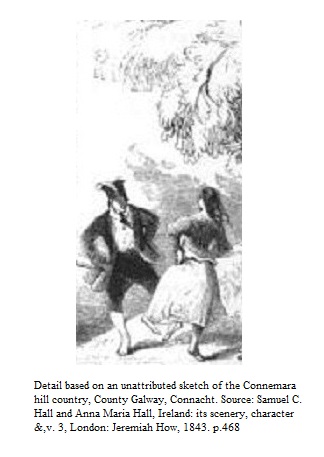 Simulating an Irish fiddlers practice session that begins with "The Galway Girl" segues into
the "Mason's Apron Reel" and ends with a not yet named jig,
fiddlers passage is a work of polyphonic electronic literature that is written to the author's
Simulating an Irish fiddlers practice session that begins with "The Galway Girl" segues into
the "Mason's Apron Reel" and ends with a not yet named jig,
fiddlers passage is a work of polyphonic electronic literature that is written to the author's
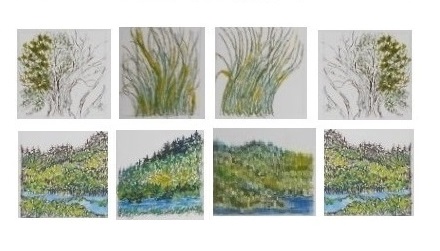 In reviewing the creation of Junction of Several Trails as documented in the pages of my writer's notebook, what seems most important is not the record of the difficult writing, design, and coding of this work, but the extraordinary histories, poetry, and musicology which were read and the complex and beautifully played/sung music that was listened to during the creation of this work beginning with
a quixotic search for the lost Irish sonata (Grattan Flood, A History of Irish Music, pp 19-20) that has informed the composition of From Ireland with Letters from its onset.
In reviewing the creation of Junction of Several Trails as documented in the pages of my writer's notebook, what seems most important is not the record of the difficult writing, design, and coding of this work, but the extraordinary histories, poetry, and musicology which were read and the complex and beautifully played/sung music that was listened to during the creation of this work beginning with
a quixotic search for the lost Irish sonata (Grattan Flood, A History of Irish Music, pp 19-20) that has informed the composition of From Ireland with Letters from its onset.
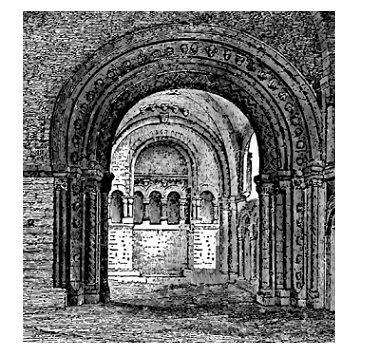 Junction of Several Trails meeting of Máire Powers and Liam O'Brien (backed
by a continuo of Irish lyrics and the literature of the Gaelic Revival) to intertwined identity explorations of the time and place of Irish American sculptor, Hiram Powers -- who creates an
iconic Abolitionist work in Florence against a background of The Risorgimento -- and Liam O'Brien, the Irish American Scholar who pursues his story.
Junction of Several Trails meeting of Máire Powers and Liam O'Brien (backed
by a continuo of Irish lyrics and the literature of the Gaelic Revival) to intertwined identity explorations of the time and place of Irish American sculptor, Hiram Powers -- who creates an
iconic Abolitionist work in Florence against a background of The Risorgimento -- and Liam O'Brien, the Irish American Scholar who pursues his story.
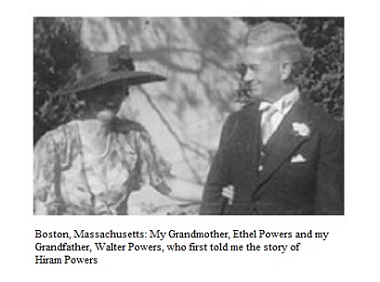 ..."And, of course, there, in a vision of the night,
..."And, of course, there, in a vision of the night,